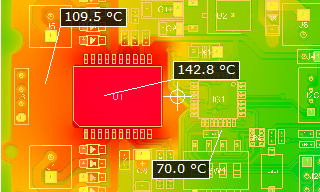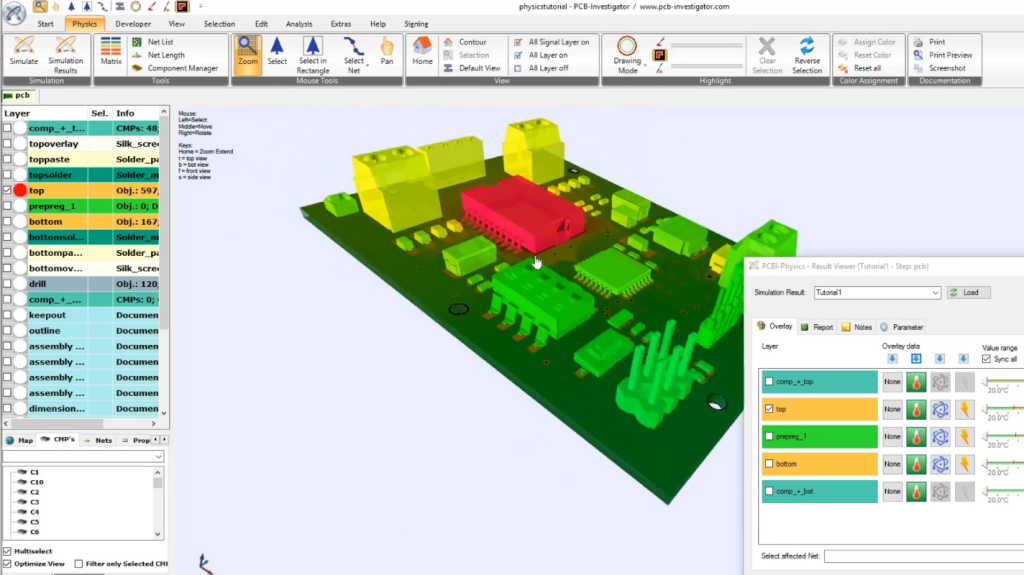
PCB-Investigator Physics is the perfect tool to simulate the physical behavior of PCBs during the development phase.
In this way, thermal hotspots, critical line resistances and excessive voltage drops can be identified, found and remedied even before the first prototype!
With the built-in editing functions of PCB-Investigator Physics, it is even possible to optimize the layout or layer structure to achieve the best physical behavior with just a few clicks!
Save valuable time and prototype costs with PCBi-Physics!
To obtain information about the physical behavior of a PCB during operation, PCB-Investigator Physics offers you the following simulations:
- The temperature increase triggered by the power dissipation of the components and high currents
- The current density, e.g. in copper constrictions or in boreholes
- The voltage loss and the line resistance between any pins on the printed circuit board
- Animation of the actual current flow direction
Starting with version V10 you are now able to perform transient simulations!
So you can find out how the PCB heats up or cools down over time! Time-dependent switching states and power losses, so-called operating states, are also taken into account (see video tutorial #6).
All simulation results can be saved as an interactive HTML report for documentation.
An example of such a report can be found here.
User guide:
You can find a detailed user manual here.
Welcome to the new world of simulation – with PCB-Investigator Physics!
Thermal simulation already during printed circuit board layout
System Recommendation:
- CPU: Intel i5/i7/i9
- RAM: minimum 16GB, better would be 32GB (*)
- GPU: Optional, but a GPU simulation is up to 12x faster than on the CPU (**).
- NVIDIA Graphics Card with CUDA 5.0 or higher (https://developer.nvidia.com/cuda-gpus)
- We recommend at least 768 CUDA cores, 2560 or more are better.
- Minimum 4GB graphics card memory, 8GB or more would be better (*)
(*) the required memory strongly depends on the number of layers, the PCB size and the chosen simulation resolution (**) we achieved fantastic performance results with an NVIDIA Geforce GTX 1080 and an NVIDIA Geforce GTX 1080 TI
Here you can find our PCB-Investigator Physics videos:
Tutorial 1: How to use PCB Investigator Physics
Tutorial 2: How do I improve the thermal behavior by using other materials?
Tutorial 3: How do I improve the thermal behavior by changing the copper structure and adding vias?
Tutorial 4: How do I improve thermal performance with component heat sinks?
Tutorial 6: Time-dependent transient simulation with different operating states
Tutorial 7: PinBridges & EasyLogix Part Library
(This plug-in is only available in PCB Investigator Physics Edition! Contact us for a free trial version!)
Downloads






